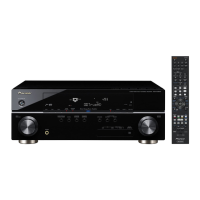
Do you have a question about the Pioneer VSX 1019AH-K - AV Receiver - Gloss and is the answer not in the manual?
| Product Type | AV Receiver |
|---|---|
| Manufacturer | Pioneer |
| Model | VSX-1019AH-K |
| Channels | 7.1 |
| HDMI Inputs | 4 |
| HDMI Outputs | 1 |
| Network Connectivity | No |
| Audio D/A Converter | 192 kHz / 24-bit |
| THX certified | No |
| HDMI Pass-Through | Yes |
| HDMI Version | 1.3a |
| USB Port | Yes |
| Wi-Fi | No |
| Bluetooth | No |
| Audio Formats Supported | Dolby TrueHD, DTS-HD Master Audio, Dolby Digital Plus, Dolby Digital, DTS |
| Video Formats Supported | 1080p |
| Frequency Response | 5 Hz - 100 kHz |
| Input Sensitivity | 200 mV |
| Video Inputs | Composite, Component |
| Video Outputs | Composite, Component |
| Audio Inputs | Optical, Coaxial |
Lists supplied accessories included with the receiver for initial setup.
Provides guidance on selecting a suitable and safe location for unit installation.
Identifies and describes the buttons, dials, and indicators on the receiver's front panel.
Explains the color-coding system and main buttons on the remote control for component operation.
Illustrates the various input and output terminals available on the rear panel of the receiver.
Describes different speaker configurations like 7.1ch, 5.1ch with bi-amping, and 5.1ch with Zone 2.
Offers tips on optimal speaker positioning for the best surround sound quality.
Provides instructions for connecting speaker wires using bare wire or banana plugs, with safety precautions.
Explains the process and cautions for bi-amping and bi-wiring speakers for improved audio performance.
Guides on configuring Surround Back System for Zone 2, Speaker B, or Bi-Amping applications.
Illustrates how to connect HDMI-equipped components like Blu-ray players to the receiver and TV.
Details connections for video sources like recorders and VCRs, noting analog audio requirements.
Explains how to connect for multi-room audio playback using ZONE 2 with separate TVs and speakers.
Explains how to connect an iPod for audio playback control using the receiver's interface.
Instructions for connecting USB devices for file playback via the front panel interface.
Instructions on how to change the speaker impedance setting from 8Ω to 6Ω for compatible speakers.
Explains the process of automatically setting up surround sound using the MCACC system and microphone.
Describes how to configure input assignments when components are not connected to default terminals.
Provides basic steps for playing audio or video from connected components and selecting the correct input.
Details connecting an iPod for audio playback control using the receiver's interface and GUI screen.
Explains how to play files from a connected USB memory device via the front panel interface.
Introduces SIRIUS radio service and requirements for its use with the receiver.
Explains the Auto Surround feature for automatic source detection and playback mode selection.
Details various advanced surround modes for customizing audio experiences based on source material.
Explains how stereo playback works, including downmixing of multichannel sources.
Explains Stream Direct modes for pure analog/digital sound reproduction by bypassing signal processing.
Guides on switching between calibrated MCACC presets for different listening positions or sources.
Explains how to connect KURO LINK compatible devices for synchronized operation via HDMI.
Guides on configuring KURO LINK and Display Power Off settings in the receiver's setup menu.
Describes various audio adjustments available, including MCACC presets, EQ, S-Wave, Delay, Midnight, Loudness, and Tone controls.
Covers video adjustments such as Digital Video Conversion, Resolution, Aspect Ratio, and I/P Converter.
Guides on selecting different speaker systems (A, B, AB, Off) and their implications, especially for Speaker B setting.
Explains how to view current receiver settings like input function, MCACC presets, and KURO LINK status.
Guides on assigning input function buttons to control external components using manufacturer preset codes.
Provides a procedure to reset all receiver settings to their original factory defaults.
Introduces the Advanced MCACC system for detailed sound field calibration and adjustment.
Guides through customizing setup options for more detailed MCACC calibration, useful for different listening positions.
Explains how to make detailed adjustments to surround sound performance after initial setup.
Details how to fine-tune the overall balance of speaker system levels using test tones.
Guides on setting precise delay times for speakers to ensure sounds arrive simultaneously.
Guides on verifying calibrated settings like speaker configuration, channel levels, and distances.
Describes how to rename MCACC presets, copy settings, and clear presets for better organization.
Outlines how to change speaker settings and other system configurations through the main setup menu.
Allows detailed adjustments for surround sound performance, speaker placement, and overall balance.
Explains how to adjust the overall balance of speaker system levels using manual or automatic test tones.
Describes how to adjust the X-Curve setting to restore proper tonal balance for movie soundtracks in large rooms.
Addresses issues related to the receiver not turning on, switching off unexpectedly, or button response problems.
Provides solutions for various no-sound scenarios, including front speakers, surround, center, and surround back speakers.
Covers common video issues like no image output, recording problems, and noisy or distorted pictures.
Provides important details and configurations for HDMI connections, including HDCP compatibility and signal routing.
Lists common issues with USB devices, such as unrecognized devices, incorrect file formats, and hub usage.
Lists technical specifications for the amplifier, audio, tuner, video, and digital sections, as well as power and dimensions.
Details the terms and conditions of the product's limited warranty, including coverage and exclusions.
Provides contact information and procedures for obtaining customer support, service, and replacement parts.
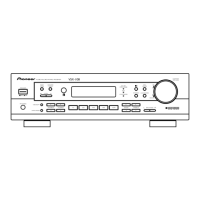

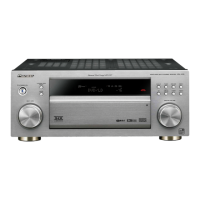
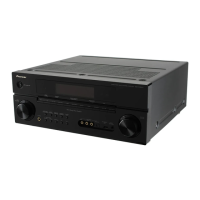

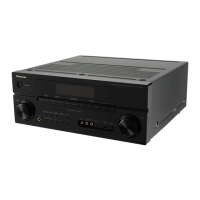

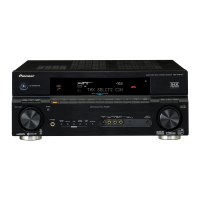
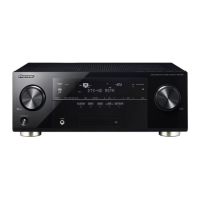
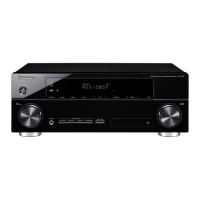

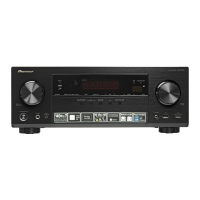
